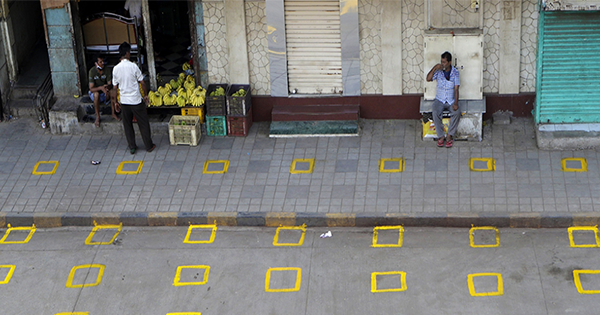SOUTH ASIA SHOWS NEW SIGNS OF CAMARADERIE
South Asia shows new spirit of collaboration to fight COVID-19 pandemic
A promising sign of potential regional cooperation occurred on March 15, when Indian Prime Minister Narendra Modi organized a videoconference about the coronavirus pandemic with the eight-member countries of the only intergovernmental group spanning the entire region, the South Asia Association for Regional Cooperation (SAARC).
This was SAARC’s first high-level meeting since 2014. The meeting was telecast live on YouTube and broadcast on television throughout the region.
At the meeting, India’s prime minister launched a COVID-19 emergency fund with an initial contribution of $10 million. The fund has since collected voluntary contributions of more than $8 million from most SAARC members. While the initial amounts are modest,
The region’s countries now have an opportunity to come together to remove tariffs on medical devices, protective gear, disinfectants, and soap, and they have started to do so.
The national leaders also proposed collective ways to combat the pandemic. For instance, Pakistan offered to hold a SAARC health ministers videoconference to enhance cooperation and proposed establishing a working group of national authorities to exchange information and data in real time.
Senior health professionals of all SAARC countries met by videoconference on March 26, and agreed that India will share online training tools for emergency responders and set up an electronic disease surveillance platform to help neighboring countries trace and manage the coronavirus outbreaks. SAARC’s Disaster Management Centre, which is housed in the campus of the Gujarat Institute of Disaster Management in India, has also set up a COVID-19 website with daily updates about confirmed cases throughout South Asia and actions that each country is taking.
Prime Minister Dr Lotay Tshering joins the SAARC leaders in a video conference to discuss and coordinate in tackling COVID-19 outbreak in the region. The conference is an initiative of PM @narendramodi. Health and foreign ministers are also present.@DechenwangmoM @FMBhutan pic.twitter.com/uzOWrYJbYq
— PM Bhutan (@PMBhutan) March 15, 2020
Countries are shoring up support and demonstrating solidarity. A few days ago,
South Asians have long suffered from intraregional tariff and nontariff barriers that make it difficult to move goods and people across borders. Our benchmark report, A Glass Half Full: The Promise of Regional Trade in South Asia estimates that the trade within the region could be worth $67 billion rather than its recent value of $23 billion. South Asia also has significant constraints on its services trade, even though the services sector accounts for more than half of the economies in Bangladesh, India, Pakistan, and Sri Lanka.
They must also act to avoid restrictive actions by importers and exporters that could reduce global supply and affect critical supply chains, especially tariffs on food and other necessities.
Short-term collaboration to fight the pandemic could bring longer-term benefits by strengthening regional institutions, improving regional infrastructure and connectivity.
This is a critical inflexion point for regional cooperation in South Asia. An increase in cooperation has the potential to produce significant economic gains, accelerate shared growth, and reduce poverty.
The crisis is an opportunity to put aside traditional concerns and take joint action. , advancing trade policy, and developing cross-boundary solutions to shared issues.
South Asia has achieved significant progress through cooperation in the power sector, and that experience can be applied to special priority areas such as food security, critical logistics, and health services.





